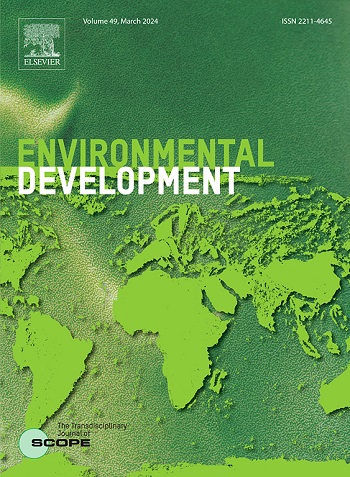Experimental and economic analysis to explore the potential of managing date palm waste to generate energy for heating applications
IF 4.7
2区 环境科学与生态学
Q2 ENVIRONMENTAL SCIENCES
引用次数: 0
Abstract
Date palm trees, especially Alhayani, Barhi, and Majhool, have a rich history in Palestine. However, the waste produced by these trees, such as unripe dates, date pits, and palm fronds, is usually burned on farms, leading to environmental concerns, or collected inside the farms for long periods, which leads to the emergence of the red date palm weevil, which works to damage palm trees. These wastes are a significant source of excellent biomass that can be used in many applications such as energy production, livestock feed, fertilizer for soil, and wooden boards, and can even be used as insulating materials as they have an excellent insulation value up to 0.083 W/m.K [1]. This study focuses on utilizing agricultural waste from date palm trees in Palestine by grinding and transforming it into wooden blocks or pellets for use in heating, bakery ovens, household wood stoves, and other applications. The effectiveness of these waste materials for use as excellent heat value resources has been demonstrated, especially when compared to other tree waste. The heating values that were measured for date kernel (17.127 MJ/kg), palm leaf (16.887 MJ/kg), and palm frond petiole (15.990 MJ/kg) indicate their promising potential for use in heating applications. A feasibility study was conducted for a production line that converts these waste materials into wooden blocks for use in heating applications. The annual profits were estimated at approximately 41000 $, with a payback period of around 2.4 years and a return-on-investment rate of 36 %.
实验和经济分析,探索管理椰枣废料为加热应用产生能源的潜力
枣椰树,特别是Alhayani, Barhi和Majhool,在巴勒斯坦有着丰富的历史。然而,这些树产生的废物,如未成熟的枣子、枣核和棕榈叶,通常在农场燃烧,导致环境问题,或者在农场长时间收集,导致红枣棕榈象鼻虫的出现,破坏棕榈树。这些废物是优质生物质的重要来源,可用于能源生产、牲畜饲料、土壤肥料和木板等许多应用,甚至可以用作绝缘材料,因为它们具有高达0.083 W/m的优异绝缘值。K[1]。这项研究的重点是利用巴勒斯坦枣椰树的农业废料,将其磨碎并转化为木块或颗粒,用于加热、烘焙烤箱、家用柴炉和其他应用。这些废物作为优良热值资源的有效性已得到证明,特别是与其他树木废物相比。枣核(17.127 MJ/kg)、棕榈叶(16.887 MJ/kg)和棕榈叶柄(15.990 MJ/kg)的热值表明了它们在加热应用中的潜力。对一条生产线进行了可行性研究,该生产线将这些废料转化为用于加热的木块。年利润估计约为41000美元,投资回收期约为2.4年,投资回报率为36%。
本文章由计算机程序翻译,如有差异,请以英文原文为准。
求助全文
约1分钟内获得全文
求助全文
来源期刊

Environmental Development
Social Sciences-Geography, Planning and Development
CiteScore
8.40
自引率
1.90%
发文量
62
审稿时长
74 days
期刊介绍:
Environmental Development provides a future oriented, pro-active, authoritative source of information and learning for researchers, postgraduate students, policymakers, and managers, and bridges the gap between fundamental research and the application in management and policy practices. It stimulates the exchange and coupling of traditional scientific knowledge on the environment, with the experiential knowledge among decision makers and other stakeholders and also connects natural sciences and social and behavioral sciences. Environmental Development includes and promotes scientific work from the non-western world, and also strengthens the collaboration between the developed and developing world. Further it links environmental research to broader issues of economic and social-cultural developments, and is intended to shorten the delays between research and publication, while ensuring thorough peer review. Environmental Development also creates a forum for transnational communication, discussion and global action.
Environmental Development is open to a broad range of disciplines and authors. The journal welcomes, in particular, contributions from a younger generation of researchers, and papers expanding the frontiers of environmental sciences, pointing at new directions and innovative answers.
All submissions to Environmental Development are reviewed using the general criteria of quality, originality, precision, importance of topic and insights, clarity of exposition, which are in keeping with the journal''s aims and scope.
 求助内容:
求助内容: 应助结果提醒方式:
应助结果提醒方式:


